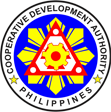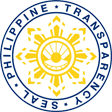- Sun.Star Cagayan de Oro
- 19 Sep 2019
- BY ORLANDO R. RAVANERA
(1st of 2 Parts)
O ur country is facing multi-dimensional challenges that unless soon addressed will lead to a socio-economic-environmental debacle. Poverty continues to plague families and communities. Climate change threatens lives and livelihoods. Conflicts are raging especially in war-torn Mindanao where violent extremism looms horribly manifested by the Marawi Siege by the ISIS and most recently, the first in history of a Filipino turned suicidal bomber. Inequalities are deepening. These phenomena are disturbingly becoming ordinary.
Of these phenomena, the most glaring is Climate Change, the Philippines being the 3rd hardest hit country in the world where tens of thousands have died or rendered homeless in just a decade. It has become imperative to have a countervailing force to save lives and livelihoods, especially in the areas identified as high risk and vulnerable.
Thus, when Typhoon Ondoy hit Metro Manila in September 2009, how to save thousands of lives was the call of the times. Agencies of government together with non-government organizations crafted plans to save thousands of people in the identified vulnerable areas especially in flood prone areas where thousands of informal settler families (ISFs) were living. Where to relocate? How to raise funds? What are the strategies and tactics? What government offices will be involved? These questions begged for a comprehensive plan to be urgently put into motion.
To save the lives and livelihood of the most vulnerable, government like a good father of the family took positive action by using its fund, especially the Philippine Development Assistance Fund (PDAF), to give refuge to the marginalized and the downtrodden by relocating thousands of families residing in the danger zone of Valenzuela and Caloocan City particularly in the Tullahan Area, a non-government






